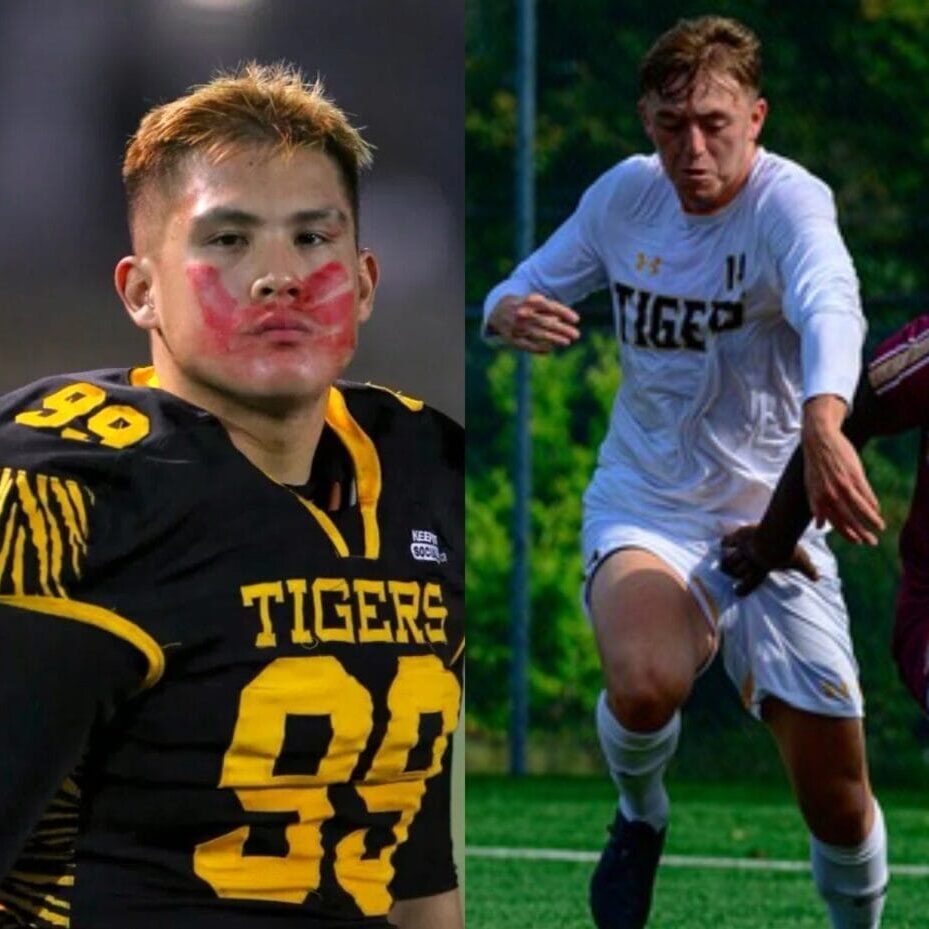
Truth and Reconciliation Day: a spotlight on Indigenous Dalhousie athletes
Allan Lafond Jr. and Mykeo Parker-Christmas share their experiences
As Truth and Reconciliation Day approaches, the excellence and advocacy of Dalhousie Indigenous athletes comes to light and gives the opportunity to celebrate these athletes’ accomplishments.
Among these athletes are Allan Lafond Jr. and Mykeo Parker-Christmas.
Lafond Jr., a member of the Pasqua First Nation in Saskatchewan, travelled across Canada to play football at Dalhousie University. Lafond Jr., now an alumnus of Dal and a student at the University of Victoria remembers there being a learning curb when he first arrived in Halifax.
Coming from Saskatchewan, Lafond Jr. had several other Indigenous members on his football team, but at Dalhousie, it was only him and another. Lafond Jr. was on campus for five years and said it took three years for him to have Indigenous friends.
Being an Indigenous person in Saskatchewan and coming to Nova Scotia would be a difficult shift for anyone. According to Stats Canada, 187,890 Indigenous peoples lived in Saskatchewan in 2021, a massive difference to the 52,430 who lived in Nova Scotia. So in 2019, Lafond Jr. being one of the minorities on the Dal football team, felt like he was representing all Indigenous peoples.
“I could really feel my identity,” Lafond Jr. told the Dal Gazette.
In his final season, Lafond Jr. felt the football team became more diverse and he shared the field with two other Indigenous football players which made it feel like a safe space for the fifth-year student.
Parker-Christmas, a Mi’kmaq student who plays for the Dalhousie soccer team has used his schooling as an opportunity to learn more about Indigenous cultures and practices by minoring in Indigenous studies. Parker-Christmas also has had Curtis Michael, a Mi’kmaw professor from Millbrook, N.S. who really stood out to him.
In 2020, Parker-Christmas was preparing to represent Mi’kmaw soccer at the North American Indigenous Games (NAIG), but because of the pandemic was unable to compete. When NAIG came to Halifax in the summer of 2023, Parker-Christmas remembers being there for the opening ceremony and some events in which the pride of the athletes and spectators was so on display.
Indigenous advocacy in sports
When the news broke about the unmarked graves at the Kamloops Residential School, Lafond Jr. felt that he needed to bring it upon himself to use his platform as a student athlete to spread awareness. The 5-10 defensive lineman marched onto the Wickwire Field turf with an “Every Child Matters” flag in hand and painted a red handprint over his mouth.
Lafond Jr. has experienced moments where he faced racism while playing his sport, but says during his time at Dal he more experienced ignorance. One of these instances was when a moment of silence was held to acknowledge the horrors of Residential Schools but the national anthem was played moments after.
“You can’t take a moment of silence for that and then expect everybody to be patriotic,” Lafond Jr. said.
Lafond Jr. moved away from his teammates when the Canadian anthem was played and even kneeled once while his teammates sang.
On Truth and Reconciliation Day last year, prior to the women’s soccer game, Parker-Christmas got up in front of the crowd at Wickwire Field and told his and his family’s story. His grandfather was a survivor of Shubenacadie Residential School and Parker-Christmas said his grandfather spoke little about his experience other than him being taken away from his family.
He remembers his speech as an empowering moment and his family drove down from Membertou to see it.
“It felt good that we actually did something,” Parker-Christmas said.
Parker-Christmas remembered people questioning their game being on Truth and Reconciliation Day, but he felt having the game was important because people who normally wouldn’t be exposed to his story had a chance to listen and learn.
Supports for Indigenous athletes
When it comes to the future of Indigenous athletes, Lafond Jr. feels that accessibility needs to be the number one priority. He credits his mom for being able to guide him over the hurdles to become a university level athlete and he noticed there were many other Indigenous athletes who had the potential, but weren’t given the access to sports.
“When I get older I’d like to have camps for Indigenous athletes,” Lafond Jr. said. “That don’t get the opportunities that I had.”
Lafond Jr. wants sports to be a space where you see race but their athletic ability is put above it.
“An athlete shouldn’t be judged based on their background,” Lafond Jr. said. “They should only be judged on their athletic ability.”






